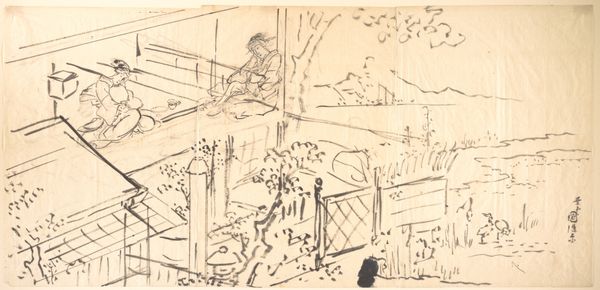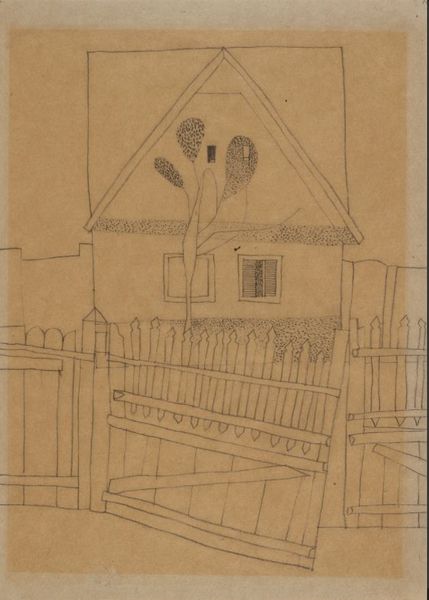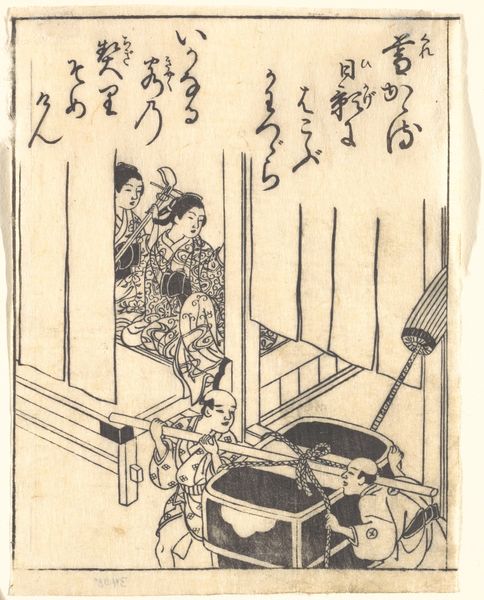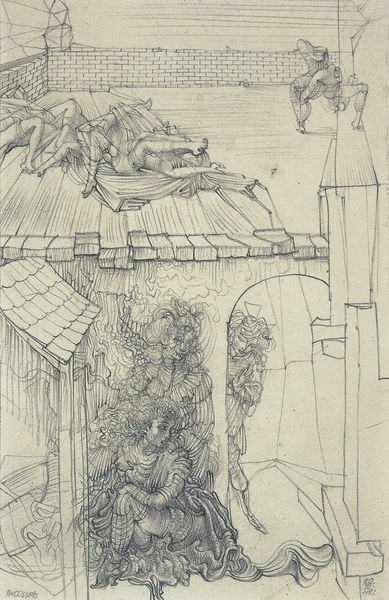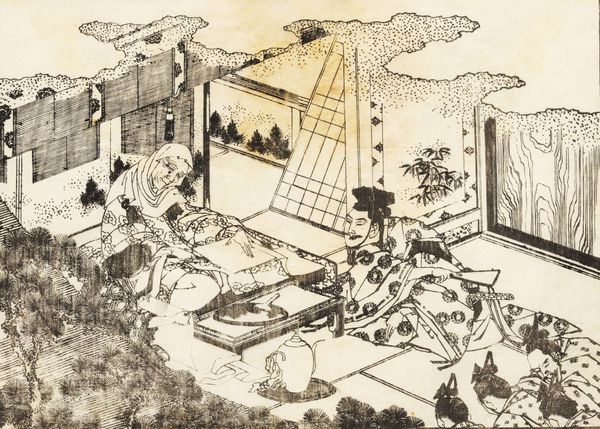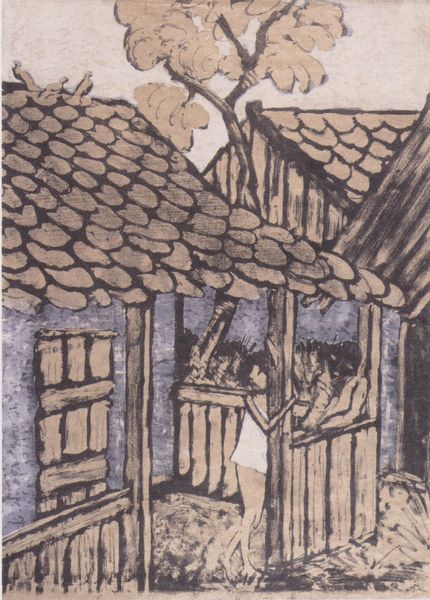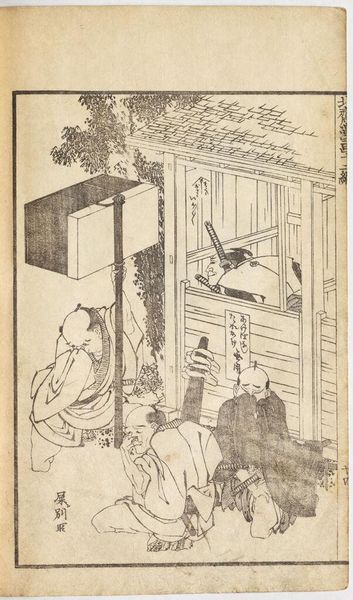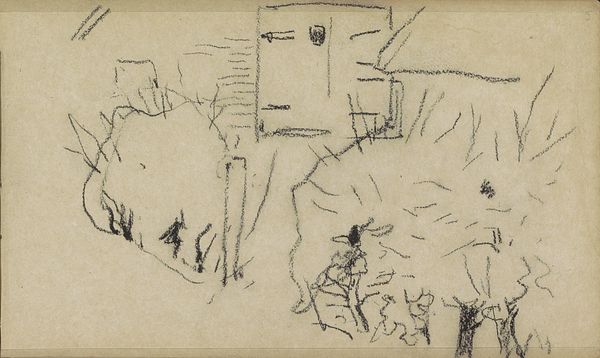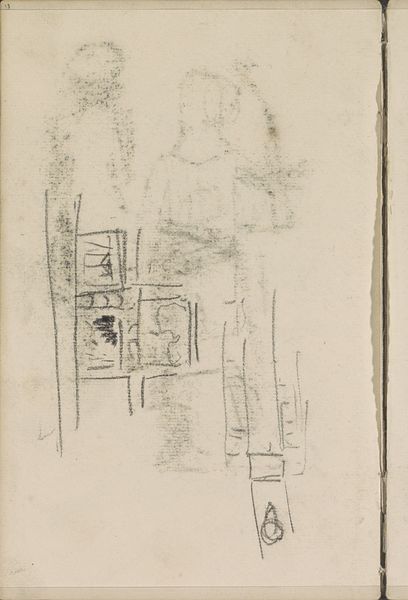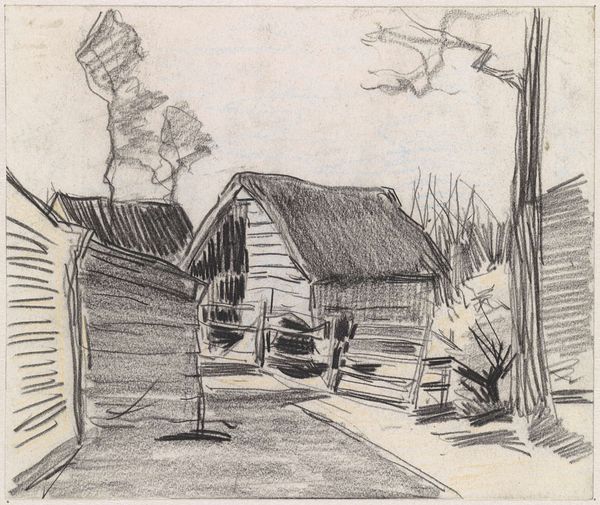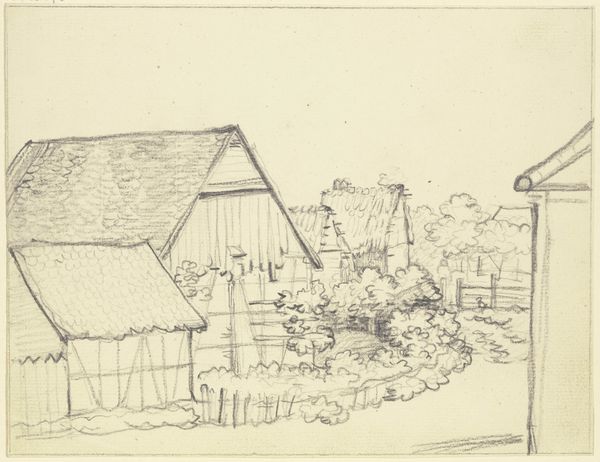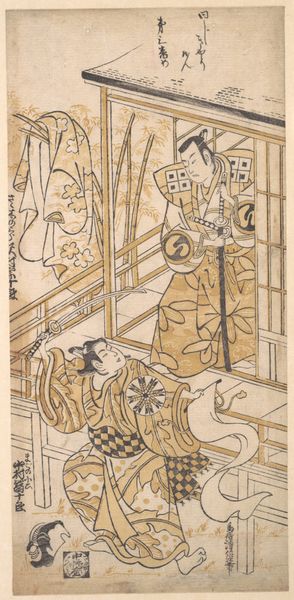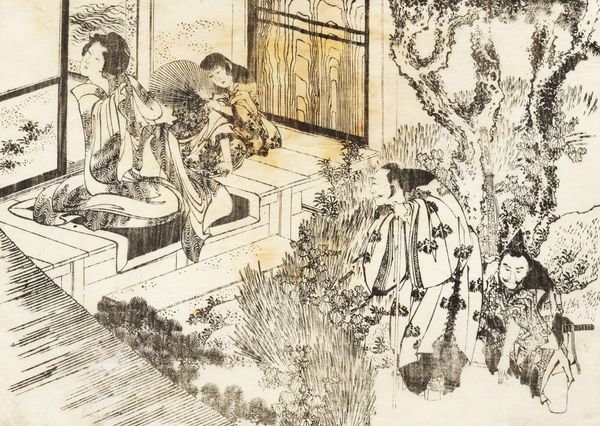
Dimensions: height 166 mm, width 132 mm
Copyright: Rijks Museum: Open Domain
Curator: Carel Adolph Lion Cachet, working sometime between 1874 and 1945, sketched this ink drawing—Binnenplaats met houten hekken en tuintjes—which translates to Courtyard with Wooden Fences and Gardens. What do you make of this cityscape? Editor: It strikes me as melancholic, even lonely. The stark lines and muted tones emphasize the rigid structure of the fences and buildings, yet there's also a vulnerability to it. It feels like a quick, personal snapshot. Curator: A snapshot it may be! Given its loose linework, it's quite plausible that this was a preliminary sketch in a personal notebook or even for a larger work, revealing intimate everyday observations that artists like Cachet wouldn't necessarily imbue with greater artistic importance. This type of personal artwork often holds powerful cultural clues. Look at the compositional choices that frame a specific worldview, reflecting everyday life and collective identity in the moment it was produced. What can you gather about society? Editor: I see the starkness as potentially pointing to class divisions, suggesting confinement and exclusion as core themes. It seems there's some degree of surveillance and segregation operating. I wonder how intentional this statement would have been? What kind of position was the artist in, what were their choices in visually reflecting that perspective? Curator: Or not reflecting it… it also raises questions about visibility. We can certainly wonder how different the cityscape looks for people within that yard versus for Cachet looking in at that fence as an observer, and the weight or lack of weight, given Cachet’s social positioning in reflecting these nuances within an image. Regardless, it reflects an environment through linear shapes but offers more through emotive cues such as loneliness. Even the black cat perched high atop a tiled roof in this backyard courtyard offers visual texture; its symbolism could perhaps denote the unknown—magic, chance, or other omens layered on a seemingly ordinary view. Editor: It really does prompt consideration around what power dynamics existed, for both the subject in the work, and for the artist in creating it. Cachet has invited that dialogue into our own present. Thank you for prompting an expansive lens through which we can appreciate and perhaps begin to re-contextualise this glimpse of everyday history. Curator: I think we agree this initially modest drawing can provoke discussions of social order, perception, and artistic license—unearthing various, valuable layers that were not obvious at first glance.
Comments
No comments
Be the first to comment and join the conversation on the ultimate creative platform.
